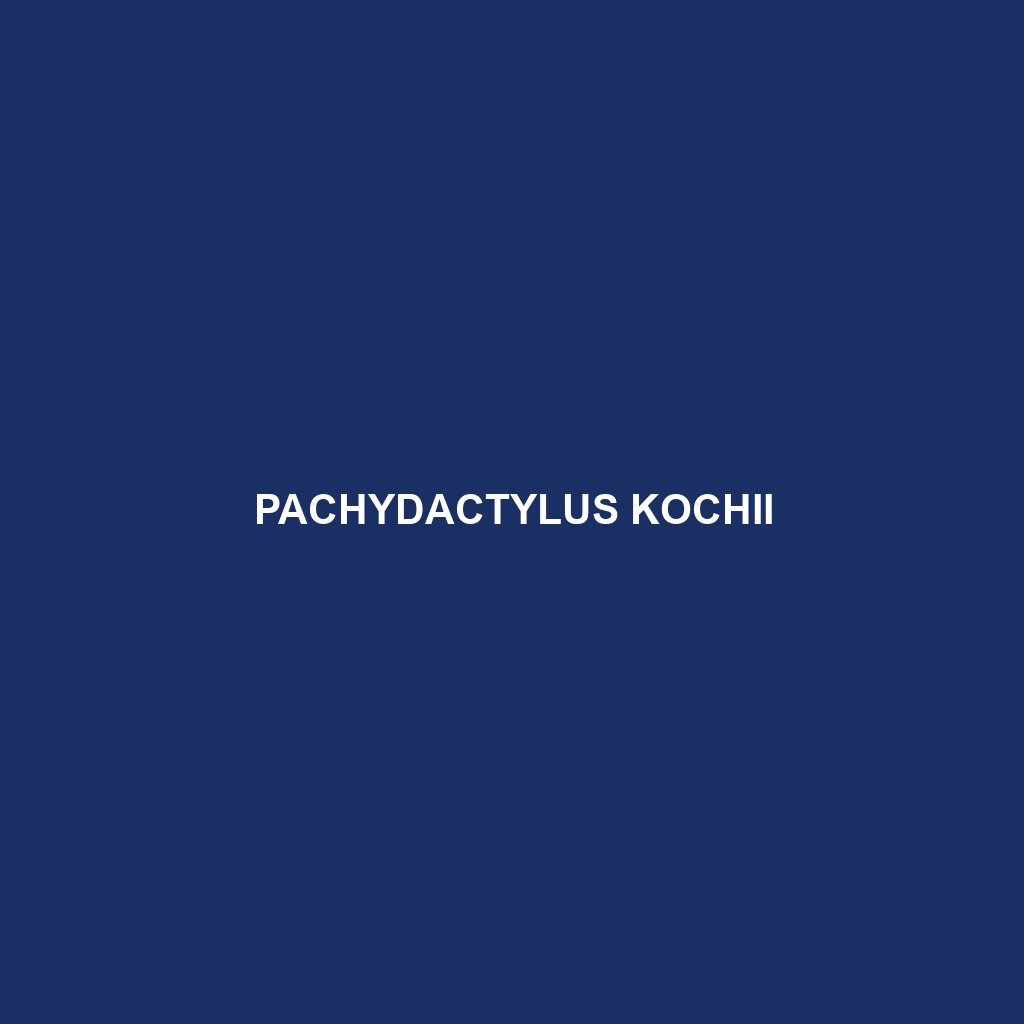Common Name
Pachydactylus kochii
Scientific Name
Pachydactylus kochii
Habitat
Pachydactylus kochii, commonly known as Koch’s thick-toed gecko, is primarily found in the arid and semi-arid regions of southern Africa, specifically in countries such as Namibia and South Africa. This species thrives in a variety of habitats including rocky outcrops, scrublands, and savannas. The climate in these regions is characterized by hot summers and mild winters, with rainfall occurring mainly in the summer months. The environmental conditions favor the growth of diverse vegetation, providing essential shelters and foraging grounds for this gecko. Their adaptability to differing soil types, including sandy and rocky substrates, allows Pachydactylus kochii to flourish in its natural habitat.
Physical Characteristics
Pachydactylus kochii exhibits several distinctive physical traits. Adult geckos typically reach lengths of 10 to 20 cm (4 to 8 inches). They possess a robust and flattened body, which aids in their burrowing behavior. Their coloration ranges from light beige to brown, often featuring darker mottled patterns that offer effective camouflage against the rocky terrain. One of the most notable features of this species is its enlarged, flattened toes, which are equipped with specialized pads to help them navigate rocky surfaces with ease. The skin texture is smooth, and they have relatively large eyes, allowing for excellent night vision.
Behavior
Diet
The diet of Pachydactylus kochii primarily consists of insects, making it an insectivore. It typically preys on a variety of insects, including crickets, beetles, and grasshoppers. Their hunting strategy involves ambushing prey during nocturnal foraging excursions, utilizing their excellent vision and quick reflexes to capture food. This gecko plays a crucial role in controlling insect populations within its habitat, thereby contributing to ecological balance.
Reproduction
The reproductive cycle of Pachydactylus kochii generally follows a seasonal pattern, with mating occurring during the warmer months when food resources are abundant. Female geckos usually lay clutches of 2 to 4 eggs, which are deposited in sandy or loose soil for incubation. The gestation period lasts approximately 60 to 90 days, depending on environmental conditions. After hatching, the juvenile geckos are independent and must quickly adapt to their surroundings. Parental care is minimal, which is common among many reptile species.
Conservation Status
Currently, Pachydactylus kochii is listed as ‘Least Concern’ according to the IUCN Red List. However, habitat destruction due to agricultural expansion and urban development poses a potential threat to its population. Conservation efforts to protect this species include habitat preservation initiatives and ecological research to monitor population trends. It is crucial to maintain the natural habitats that support not only Pachydactylus kochii but the broader biodiversity of these regions.
Interesting Facts
One fascinating fact about Pachydactylus kochii is its ability to regenerate its tail, a common trait among gecko species. This adaptation serves as a defensive mechanism, allowing the gecko to escape from predators while leaving part of its tail behind. Additionally, this species communicates through a series of clicks and hisses, which play a vital role in both mating rituals and territorial disputes. Such unique behaviors make Pachydactylus kochii an intriguing subject of study for herpetologists.
Role in Ecosystem
Pachydactylus kochii plays a significant role in its ecosystem as both a predator and prey. By feeding on various insects, it helps regulate insect populations and promotes ecological balance. Moreover, it serves as a food source for larger predators, including birds of prey and snakes. As a part of the food web, this gecko contributes to the overall health of its environment. Ensuring the survival of Pachydactylus kochii is vital not only for its species but also for the integrity of the ecosystems it inhabits.
